Being a guest, 2015-ongoing
Being a guest is a processual, ongoing project that includes various artistic formats, interweaving the hypothetical use of a clay deposit in Ghana with questions of cultural identity, postcolonialism, heritage, society and migration in our time.
The project Being a guest project initially goes back to the informal offer on the part of her family to Dzifa Peters to artistically explore an unused clay deposit in the Volta Region in Ghana. The clay, which is located in a rural area of the Volta region near the Togo border, is said to have migrated geologically from the Nile to Ghana for centuries, giving it the status of a guest and a settler in the region. As a conceptual approach, the artists Dzifa Peters and Josef Zky therefore decided to examine the special state of being a guest in the course of the entire project. The clay and the entire context become a visual material, an idea that is primarily negotiated through the medium of photography and its cultural transfer.


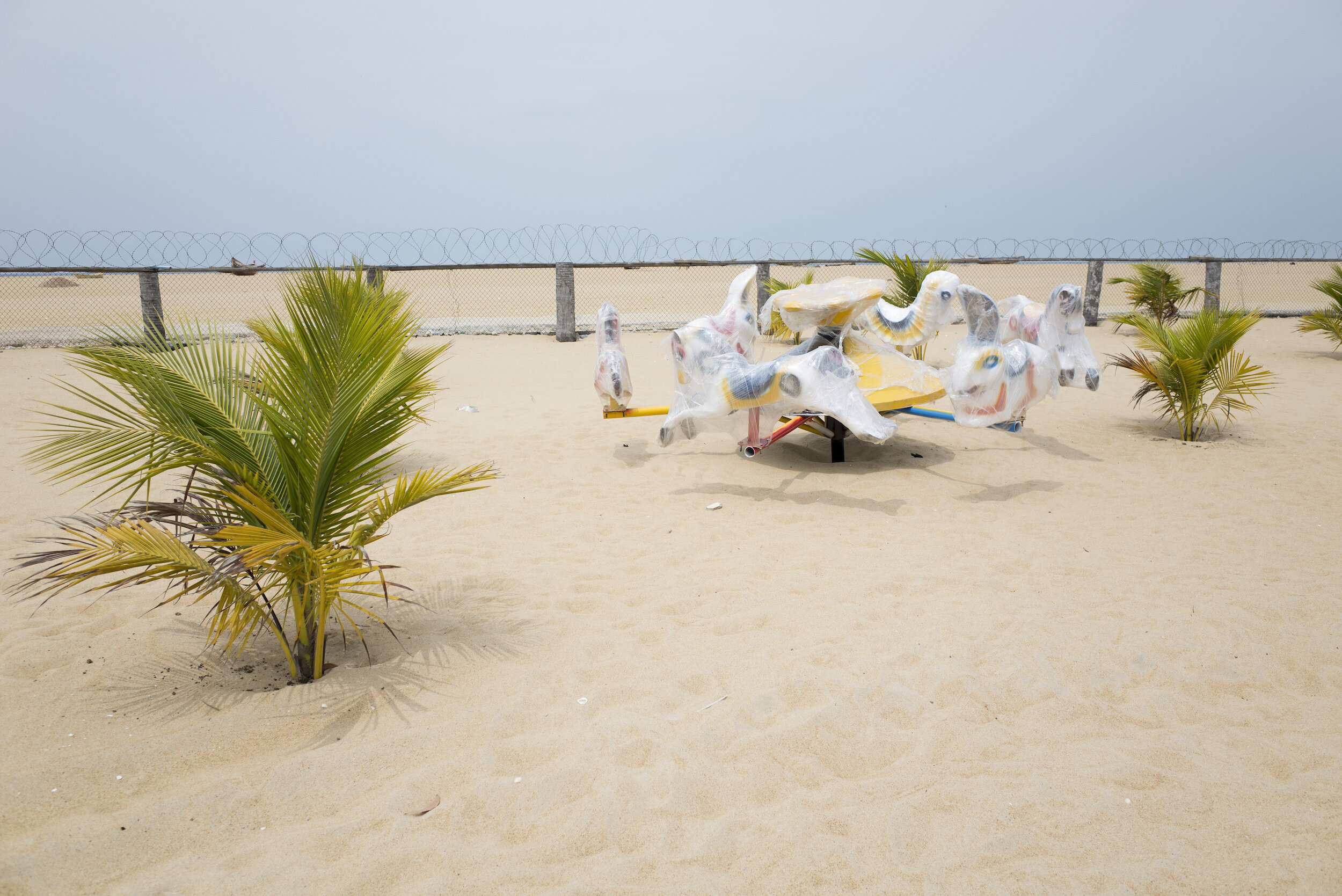


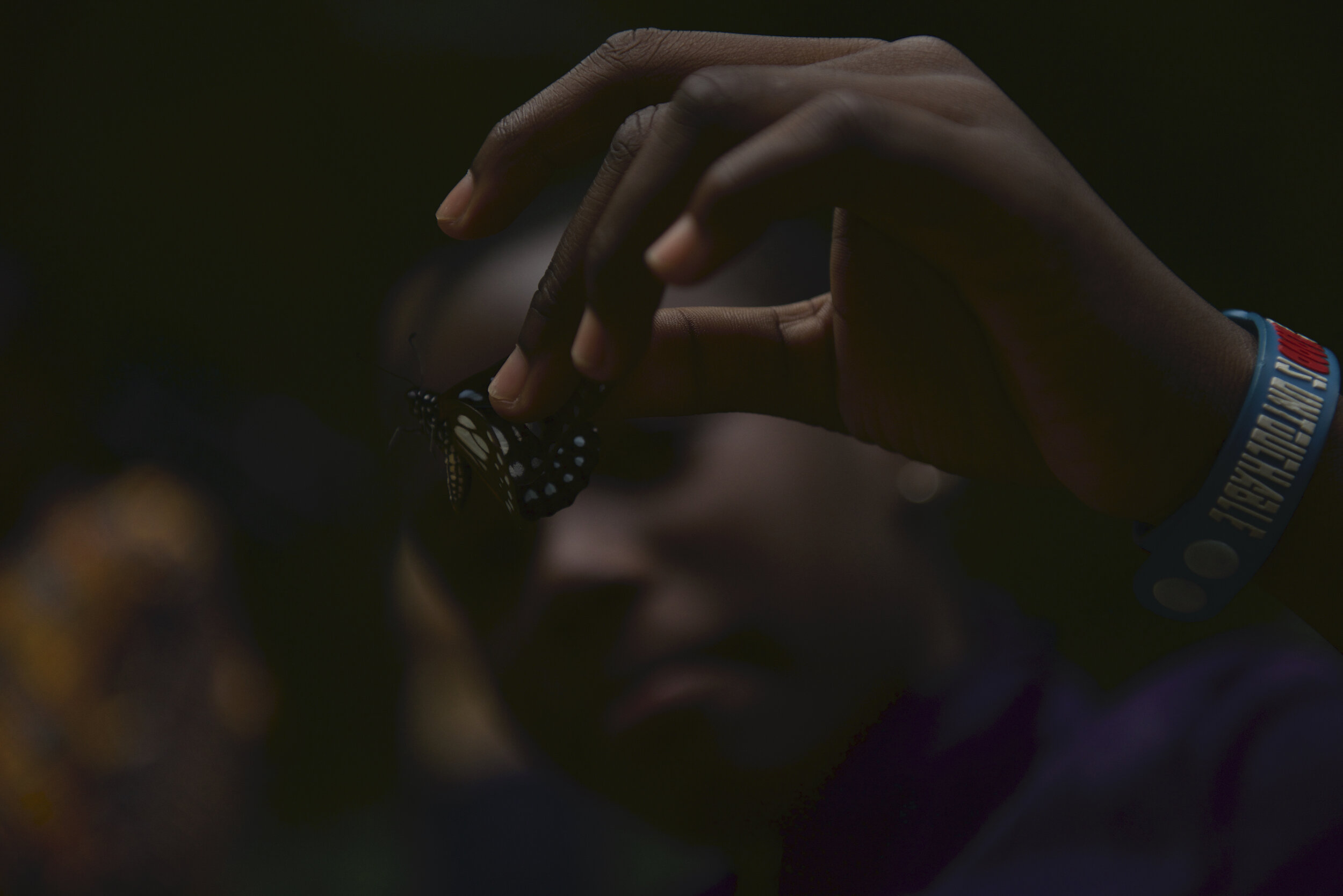


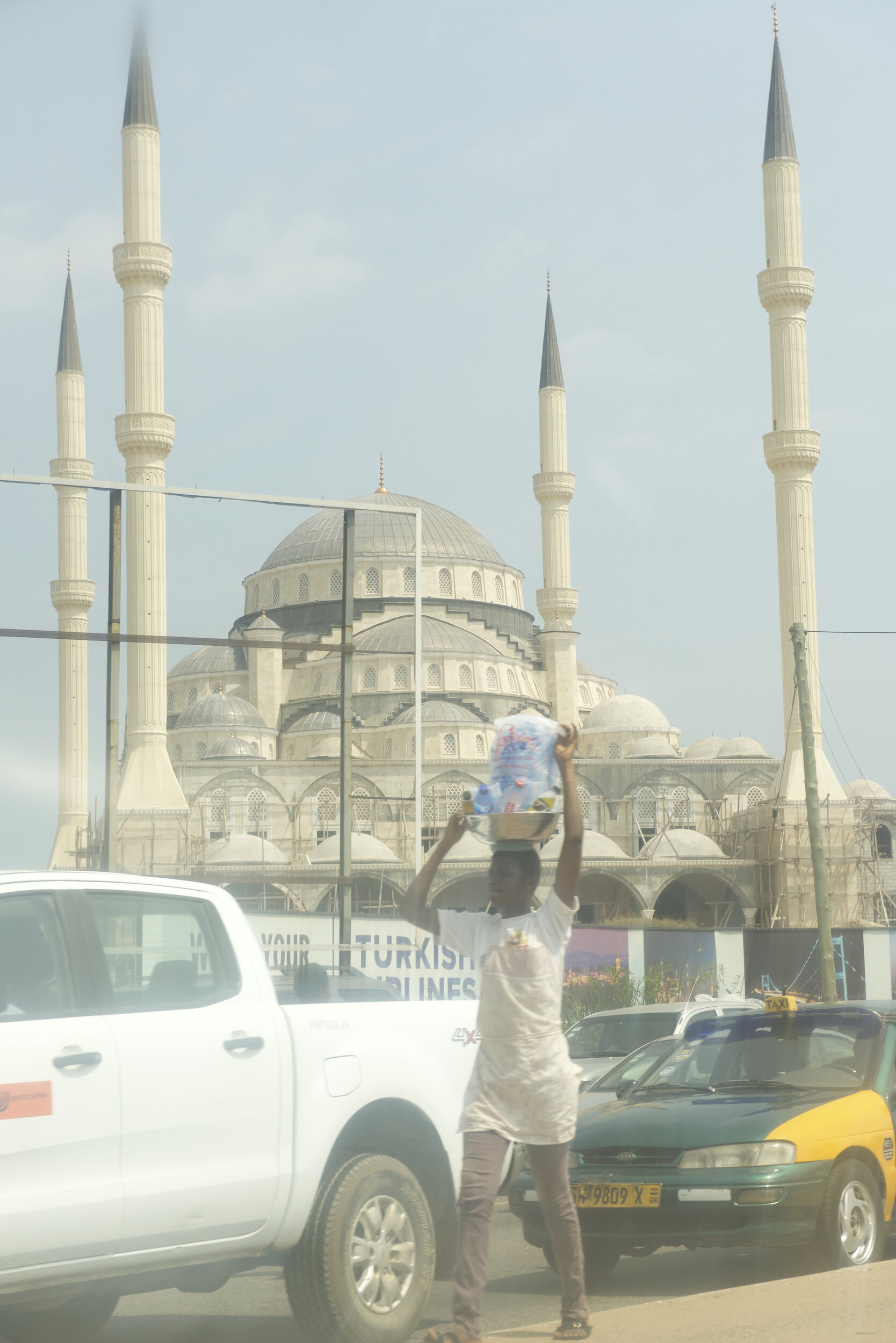

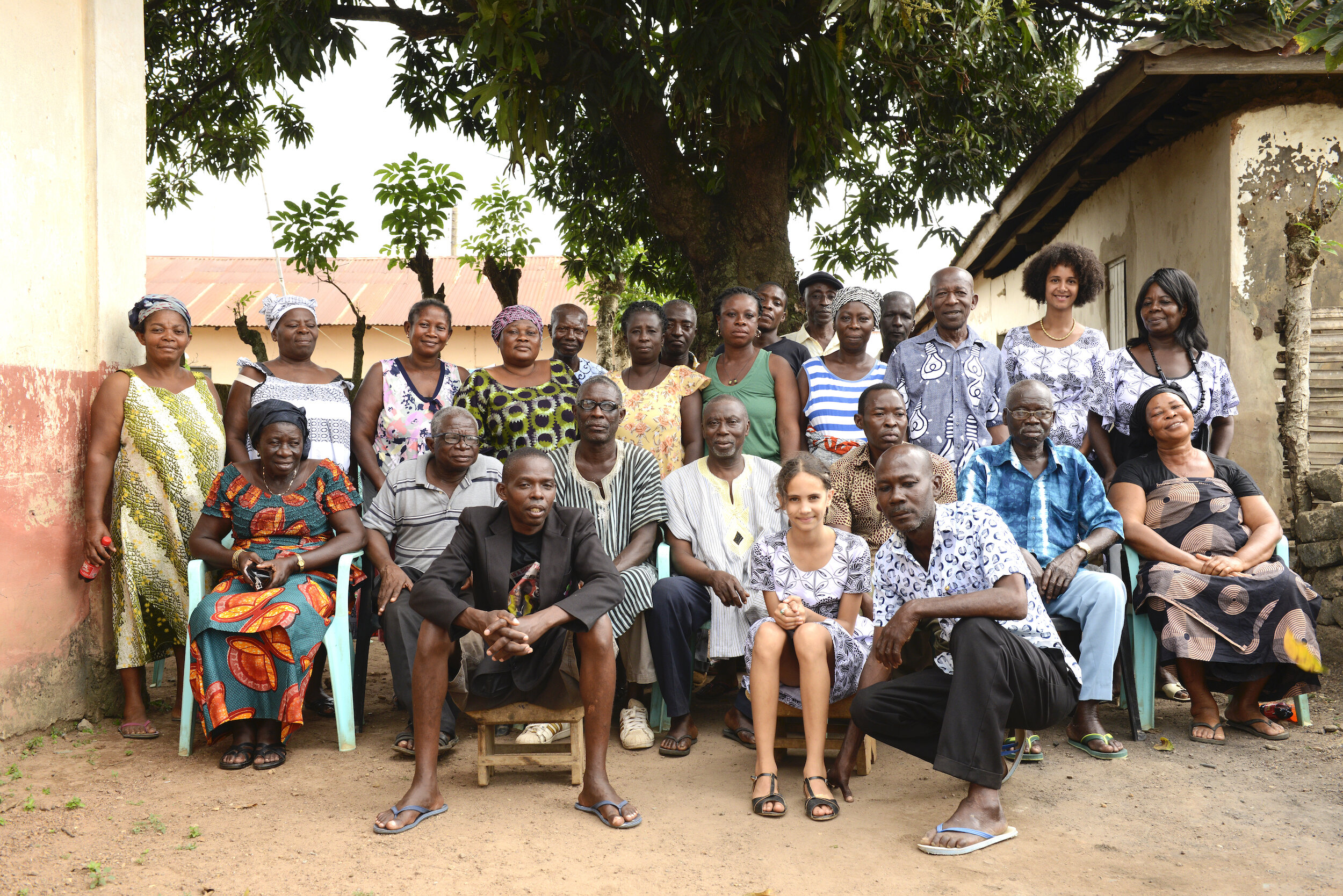

While both artists represent two different perspectives, since Dzifa has a family background in Ghana and Josef is a European and first-time guest in Africa, they interweave the hypothetical use of clay with questions of cultural identity in research trips - both in individual works and within their collaboration , postcolonialism, heritage, society and migration in our time, as well as with artistic perspectives that reflect different cultural concepts of art. Being a guest is a processual, ongoing project that includes various artistic formats such as photographs, a twelve-chapter film (currently in post- production), text and sound works as well as photographic and spatial installations. The aim of the project is to create a collective field of creative cultural exchange, research and development.
Peters and Zky traveled to the home country of Dzifa Peters family, Ghana. There they photographed and filmed small everyday perceptions for several weeks: coal sacks ready for transport, a mud ruin on a fallow land, field edges, a mosque, an old monument, a field rawhide or a new fenced playground on the beach. The question of who is a guest, where and when we refer to the state of being a guest has become an essential discourse of the project:
For example, in a family gathering in the Volta Region, were welcoming rituals were held, with the ancestors believed to be present; at a slaughterhouse, which has been managed by the minor muslim community for many years, who used to be nomads, but settled in the area; in a visit to the youth and football initiative Kadede, which was brought to life by Dzifa’s German father 20 years ago; by taking part in the archival processes of family photographs, and finally in witnessing the clay brick remains on the site of the clay deposit.
The clay deposit had been owned by Dzifa Peters‘ Ghanaian grandfather in the 1960s, who had planned to build a brick factory on the site. As a member of the Kwame Nkrumah government, which was the first Ghanaian government after Independence in 1957, his property was destroyed after a military coup in 1966 (as was the famous statue of the President in Accra). As a result, the clay deposit was abandoned for the time being.
The project negotiates the family history of four generations in the postcolonial context of Ghana and the question of the country’s cultural identity after its Independence. The two artists are concerned with complex transfers; Movements of images, ideas and goods between two cultures. Being a guest, even in this exhibition - as a situation between uncertainty, curiosity and trust - may seem simple at first, but it is a complex negotiation of perspective, understanding, reapprochement and identity. This reveals its political dimension.

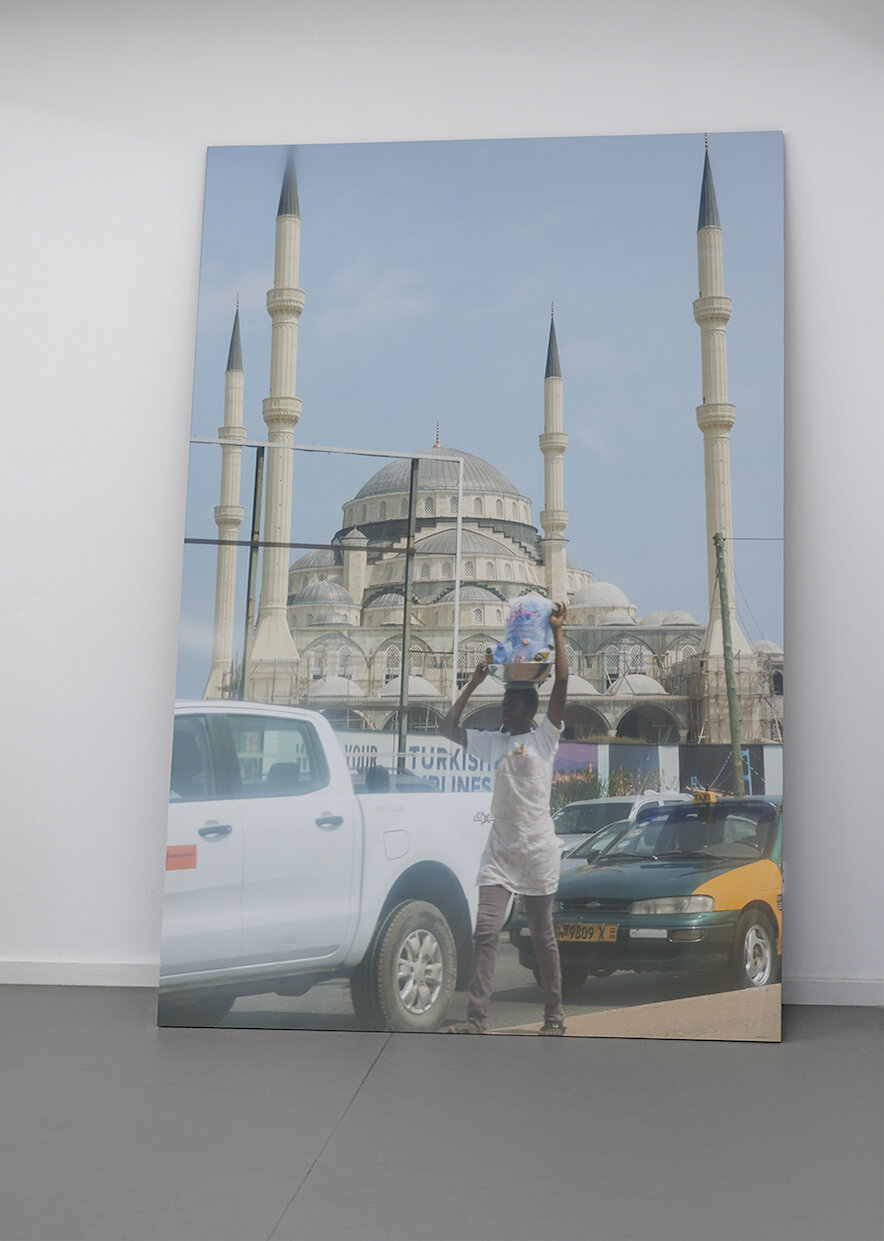
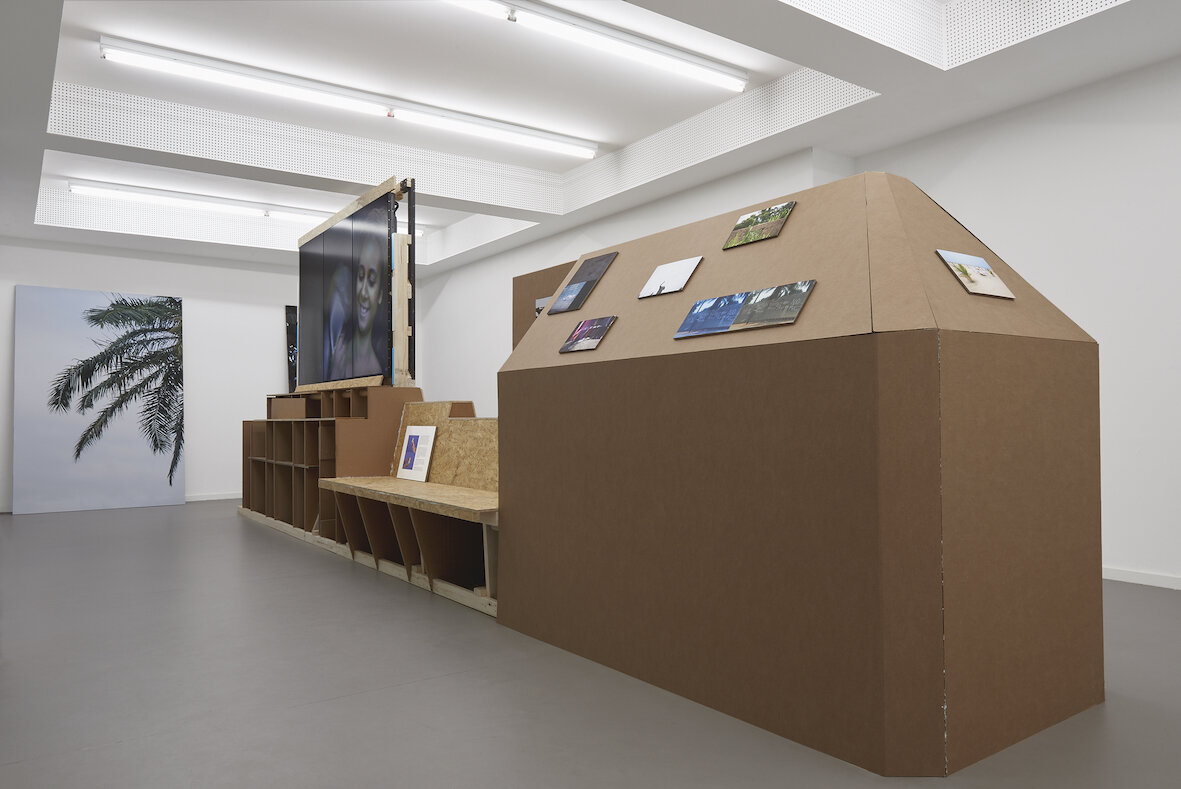







Credits
Ama Peters
Joshua Tsaku
Nii Obodai
Nuku Foundation/ Studio
Renee Neblett
